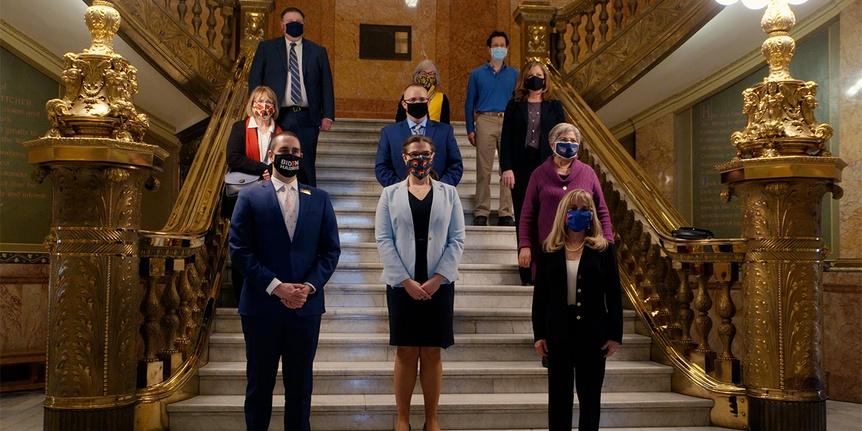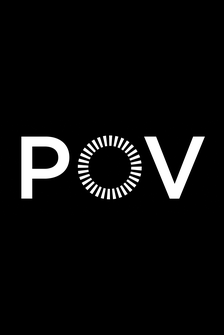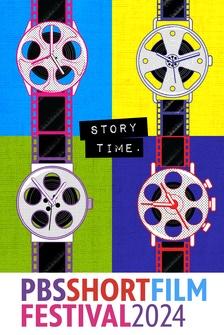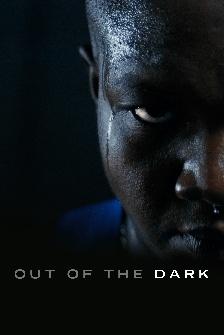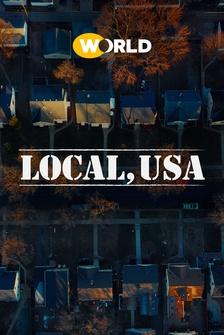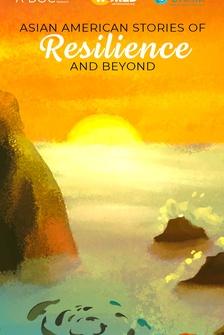(rhythmic a cappella music) - [Rupak] For me, growing up in Harlem, the son of Indian immigrants, Indian food was the delicious little secret I wolfed down every evening but didn't dare tell my classmates about over sloppy joes the next day at school lunch.
How could I begin to explain the deep comfort I derived from foods prepared in a rich sea of cumin, coriander, and turmeric or pungent mustard oil that was technically labeled for massage purposes only but tasted delicious.
I couldn't.
I wouldn't.
I was a model minority after all, desperate to assimilate.
My family's food was just too different from the mac and cheese and meatloaf that was on offer at other people's houses.
And somewhere along the way, like many brown kids in my generation, I learned that different means bad.
Thankfully, as I got older and wiser, I finally began to embrace how awesome Indian culture truly is, especially our food and especially the people behind, in front of, and all around it.
They're powerful, thoughtful, empathetic, kind, flawed; they're real.
It's just none of that was ever reflected back to us on any mainstream screen or magazine, so many of us continued to hide.
I have kids now, and I want us as a people to shine brighter than ever.
I want my kids to be proud of their Indian heritage; to grow up unafraid to share all of who they are.
And that's why I'm making this show.
I want this series to be a gathering point for food lovers from every walk of life to celebrate the incredible diversity of South Asian culture and cuisine.
It's a story of immigrants, of invention and reinvention that is the essence of what it means to be American.
From here on out, it's all about sharing in truth, joy, and celebration for the people, for the food, and for its place in the heart of the nation.
I'm actor and writer Rupak Ginn and this is my journey into my culture and across America.
(rhythmic a cappella music) (calming music) But first things first.
Prior to any new venture, or adventure in this case, it's customary for Hindus to perform a puja or prayer to ward off difficulties and direct auspicious positive things their way.
And who better to pray to for that than Lord Ganesh, the remover of obstacles.
(man chanting in foreign language) (groovy hip-hop music) Today, I'll be feasting at the "New York Times" acclaimed Punjabi Dhaba in Bakersfield California, a small city on the 400 mile stretch of meditative highway between Hollywood and Silicon Valley.
I'll meet with dhaba owner Balvinder Singh Saini and then dine with my friend and fellow actor Nik Dodani as I learn about their journeys to the American Dream and how we all come to terms with our South Asian roots.
Oh and FYI, a dhaba is a South Asian no-frills roadside eatery, where travelers of all stripes can get a delicious meal on the cheap.
- [Balvinder] Hello Mr. Rupak-ji.
- [Rupak] Rupak] Balvinder-ji.
- [Balvinder] How are you?
- We're at the Punjabi Dhaba.
Can you show me around?
I got to see the whole place.
- [Balvinder] That's our original Dhaba.
- [Rupak] Wow.
And look at this; this is the menu.
- [Balvinder] Whatever we have, we put it there.
If the page gets too crowded, we put a new page.
- I want to see now where the magic happens.
Where's the kitchen?
- The kitchen is inside.
Let me show you.
- All right, let's do it.
Bakersfield has been a hub of long-haul trucking for decades.
Over recent years, the town has become home to thousands of truckers and former truckers like Balvinder who trace their roots to the Indian state of Punjab.
The Punjab Truck Association estimates that there are currently 150,000 Punjabi truckers on US highways.
Over the last few years, dhabas like Balvinder's have popped up across North America to offer these tireless nomads a taste of home.
Look at this.
This is a really busy kitchen.
I like it.
- Here, the mata is making the paratha, the stuffed bread.
- [Rupak] Who's mata?
- Because... We call her mata; she's like our mother.
That's why.
- She's the mom!
Look, I got a question; it is so hot in here.
You got like six, seven people in here.
How do you do this in the summer?
- We get used to it.
- You are used to it.
I...
I'm too delicate for this.
- Balvinder very good.
Nice!
- Nice guy, right?
He's a good boss!
He's a benevolent... - Very nice!
(laughs) (casual music) - Hey.
- Hi, how are you?
- Oh my gosh, this menu is making my mouth water.
So wait, how do you know Balvinder?
- How do I know Balvinder?
- Yeah, have you been working here a while or what's the relationship?
- He's my husband.
- What?
- When I got married to him, I was really cooking because I know - it was my passion.
But I don't know really, exactly how to cook.
So he made me cook real good.
"This is the problem, this is the that."
And then he made me - - He was like, "Oh, this needs salt."
Why did you choose Bakersfield then?
- Because it's a trucking hub.
Trucking business is really good here.
- Because you're on a long journey, you're going on the road and you're just stopping for something real, and now I see those.
So here, I definitely want this dal makhani.
- Spice level, can you tell me?
- Alright, normally I like spicy, but it's hot right now today in Bakersfield, so no spice.
- Okay, and can I have one name for the order please?
- Rupak.
- Rupak, you can have a seat.
I'll call your name once it's ready, and you pay after when you're done, okay.
- Thank you, Mansi-ji.
- Thank you.
- Dal is one of the most important staples in all of Indian cuisine.
It can be made from a variety of lentils, peas, or beans and is often cooked with a blend of fried spices.
The first records of South Asians eating dal date back more than 5,000 years to the Indus Valley Civilization.
Dal makhani is a more recent take on the ancient dish with a rich mix of spices and a healthy dose of butter and cream that adds a deliciously full bodied texture to the dish.
Balvinder has his own spin on the item.
Here we go.
Punjabi Dhaba.
Taste 1.0.
Mm mm.
Oh my god, that's so flavorful and so much depth.
- It took us a year to come to this perfection.
This makhani is one flavor that comes from the black lentil and butter when they combine.
Sauté one time, onion, garlic, ginger.
And the second time it gets sautéed again with a little bit onion, garlic, ginger, and the butter.
But it's not heavy if you eat.
- It's not.
Yeah a lot of dal makhani is makkahn; it's butter.
- Restaurants in general have a gravy system.
They have one onion gravy, one tomato gravy, one this gravy.
It's the same gravy goes in everything.
Here, we don't have that system.
- I can taste that in this.
What I'm hearing is just a tremendous amount of love and passion and care for these ingredients.
- Yes, we do.
- That's what makes it stand out.
- Yes.
- You are fascinating because I just met your wife who is amazing.
You're a very lucky man, by the way.
- Thank you.
- So she told me she was the inspiration for the dhaba.
But what's interesting to me is I want to back up because you were a trucker.
- Mm-hmm.
- So how did you go from trucker to dhaba owner?
- When I was driving, and she was with me one time, we had an accident.
The truck went one, two, three rounds.
So she was sitting in the front, she got scared.
So we said, "Let's stay here."
- Okay.
- Then I... Bakersfield is very good for the trucking.
- We can hear the trucks as they're going by all over the place.
- When I opened this thing, very first day, we only had $2 saved.
- Wow.
- When people started coming, then they start telling their friends.
Then the "New York Times" comes.
Then the local news comes.
After that, everything changed.
People are coming from LA, Bay Area.
Dhaba is known for the food.
- It's for the food and the food is what we have here, and that's what you have.
And I just got to shake your hand again because - Oh, thank you.
- you have done it.
You have done it.
(relaxing music) It's like I never left India.
You know what I mean?
I don't know if you get that feeling.
I just felt like we were in India the whole time, and it was kind of comforting in a way.
Even like talking to them, I can feel myself slipping into just that unconscious Indian accent sometimes, which I would have to do when I would talk to uncles and aunties.
It's just something that comes out so you can sort of be understood better.
But he was, he's like, "This is who I am."
And for me, my experience growing up was always sort of playing those multiple roles and being ambivalent about identity.
(catchy music) Nik?
- What are you doing here?
- What are you doing here?
- I come here for brunch.
- My buddy Nik Dodani is an incredibly talented actor, writer, producer, and comedian.
From Netflix's "Atypical" to the movie "Dear Evan Hansen" to "Broadway's Waitress," he's everywhere.
And now, he's here in Bakersfield with me.
Shall we look at the menu?
- Let's do it.
- Let's.
She's the wife of the owner by the way.
- So great to meet you.
I'm Nik.
- This is Nik, this is my buddy.
She is amazing.
Actually, this whole dhaba was her idea.
- Amazing.
- We had an accident.
- Oh wow.
- So he was a trucker.
- Yeah.
Yeah.
- And then it swerved like three times.
- The windshield and everything, it was like on our face.
- That's when she was like, "All right, we gotta change tactic."
- We gotta settle down.
- Do you like paratha or rice with your paneer?
-Um, I'm more of a chawal person.
- You're a chawal person.
Interesting.
- We can do the stuffed paratha.
We can do the rice.
- Let's get the stuffed paratha.
We have to try.
- We gotta try the stuffed paratha.
- Yeah, we got to try the stuffed paratha.
- Let's chow down.
Challo.
Hiya!
- (chuckles) Let's go.
- I remember reading something.
You said everything about Indian culture for you growing up, 'cause we were both Indian American, we grew up here, you could put aside except for the food.
What was that about?
- Yeah, well I grew up in Arizona and like the suburbs, very white, and so I feel like a lot of Indian American kids, I was embarrassed by a lot of Indian culture.
Looking back, I feel so sad about that and cringe at that version of my childhood.
But you're right, the one thing that I didn't walk away from for a bit was the food.
- This is the samosa chaat.
- Oh my god.
- Oh man.
- Mix paratha.
One is the chili paneer.
- Which one's the chili?
This is chili?
- This is the chili.
- Okay, great.
- What are you gonna start with?
- I'm gonna go with this new chili paneer.
- Chili paneer?
Alright.
- What are you doing?
- I'll do the chili paneer.
- Let's do it together.
Paneer is a savory delicacy across South Asia.
It's sometimes called Indian cottage cheese and there are multiple ways to enjoy it: with pureed spinach, as kebabs, or even with hybrid Indian and Chinese spices.
- Oh, that's good.
- The paneer so nice and chewy.
- Paneer was my favorite food growing up with my mom, that my mom made.
She made paneer at home.
- I grew up in Harlem, which people, actually close to the Heights, and people think of it as a diverse place.
But surprisingly, not many Indians, not many at all.
In fact, I was the only one.
It was me, a bunch of Dominican kids, some Puerto Ricans, maybe some African-Americans.
So you and I strangely had the same experience of America, which was very siloed.
- I don't wanna say Harlem and Scottsdale are anywhere near each other though, man.
- But identity-wise like.
- Sure.
Sure.
- We couldn't share, I feel like.
I didn't even call people over to my house.
It was different.
It smelled different.
Indian houses smell different, right?
- Yeah, we're taught to be ashamed of all that.
- You push it down so deep that it becomes, in my case, at least ingrained in your being and you forget that that's not the way it should be.
- I really started kind of unlearning all that stuff when I left Arizona to go to college here in California.
And I stopped having my mom's food and I was suddenly untethered from my culture in a very real way, and I didn't have that daily experience.
And I did feel like a sense of loss.
Being around people of color really, and college was huge; people who were really proud of where they came from.
And it was really inspiring and I think truly just to like finding community.
- Are there any like actors, performances, or people in the arts that kind of inspired you to join?
- I feel like this is everyone's answer, but like seeing Kal Penn do "Harold and Kumar" was huge.
- Yeah, he was a big deal.
- I remember being young and reading interviews of his about how hard it was to be brown in the industry, how he changed his name from Kalpen Modi to Kal Penn and how his callback rate went up immediately.
- I actually auditioned for this huge movie, big studio, big director.
It was based on real life, like something that actually happened.
And there was a real Indian American character in it.
And I knew I got close because my other Indian actor friends were like, "Oh, my agent just called me, told me I didn't get it.
They're deciding between two guys."
I call my agent right away.
They're like, "No, we don't know yet.
We haven't heard back."
That's when I knew, I was, "Okay, it's me and this other guy."
And then a month goes by, my agent finally lets me know, "Sorry."
Come to find out they gave the role to a white guy.
- To play an Indian or they change- - To play an Indian.
- Shut up.
- To play an Indian, bro!
- I thought we stopped doing that decades ago.
We should do a thing where we do white face.
- So listen, we've eaten and I hope you have a little bit of space left.
- Oh I do.
I know.
- Because there's one other spot I wanna take you to.
- Dessert.
- How did you know?
- You're not putting me on a cooking show and not have dessert.
Right?
- Yes!
You're too sharp for me, Nik Dodani.
Let's do it.
- Let's do it.
- Get some sweets.
(casual music) The Indian grocery store is an iconic experience for many South Asian Americans.
Our childhood core memories include multiple treks to these magical places perfumed by hundreds of different spices and stocked with assortments of delicious pickles, dals, ghees, and grains from the old country that you just can't get in your local supermarket.
- My parents owned a Indian grocery store when I was growing up.
- What?
- Yeah.
- Just like this?
- Just like this.
- What was that experience like?
- I don't know.
It was very normal for me at the time.
Looking back I'm like this, is pretty cool.
- What'd you do?
You just hang out in the back?
- Just go hang out in the back.
Are you an achar guy?
- I am a big achar guy.
In fact, a meal isn't a meal without it.
- It's pickle for the people at home.
- Right, achar is pickle.
We should educate as we speak.
- Oh my god, they have a freezer full of kulfi.
- All right, we're doing kulfi.
- Mango.
- Khoya, I have to get khoya.
- Kulfi in so long.
- I can't wait.
Cheers.
Honestly like you, Balvinder, y'all inspire me, and you guys make me want to keep going on this journey.
Because when I started, I honestly wasn't sure is this going to be something that makes me want to retreat further into my shell or makes me want to go and explore this further down the road.
- And how you feeling?
- I'm feeling now more courageous, which is what I need.
- Hell yeah.
- So thank you.
I'm telling you right now, bhai for life.
(catchy music) Balvinder and Nik's stories make me hopeful.
Despite the uncertainty of these times, it's nice to see that there are still those who are fearlessly forging ahead writing their dreams into being.
In fact, they make me more than hopeful; they make me confident.
I can tell my 13-year-old desi kid self in Harlem, and my own kids too, that pakoras are as good as french fries and jalebis can take funnel cake any day.
I can say you're awesome, not in spite of but because of your culture.
As for this journey, it's just the beginning.
Now I wanna know more, see more, and of course eat more.
And the cool thing about South Asian food is that it's everywhere, dotting this vast country in places you imagine and those you never could, from Alaska to the deep South.
It's out there waiting.
And I'm ready.
Let's go.
♪ ♪ (catchy music ends) (laid-back music) (laid-back music continues)

